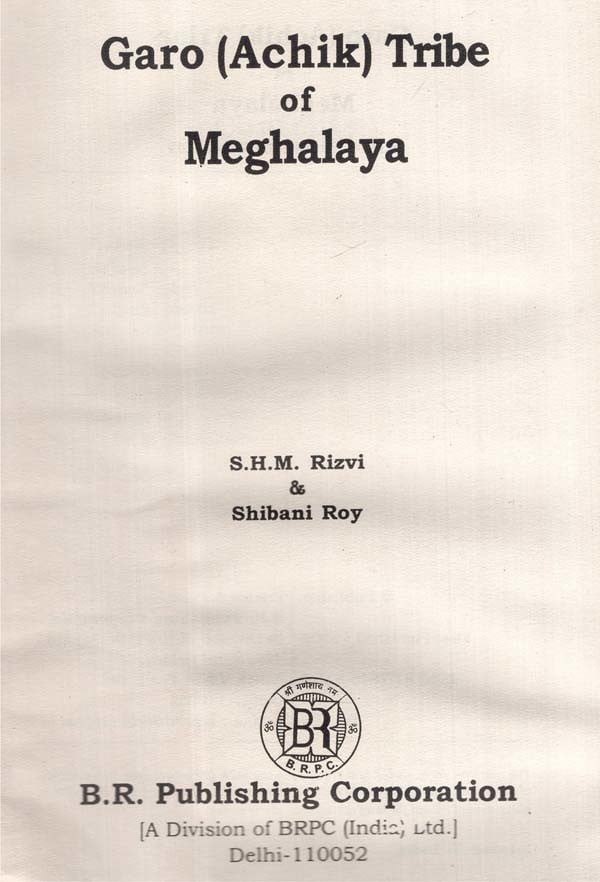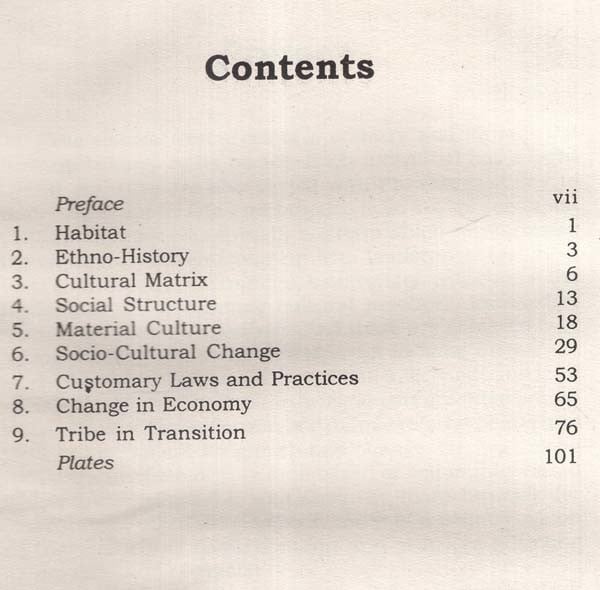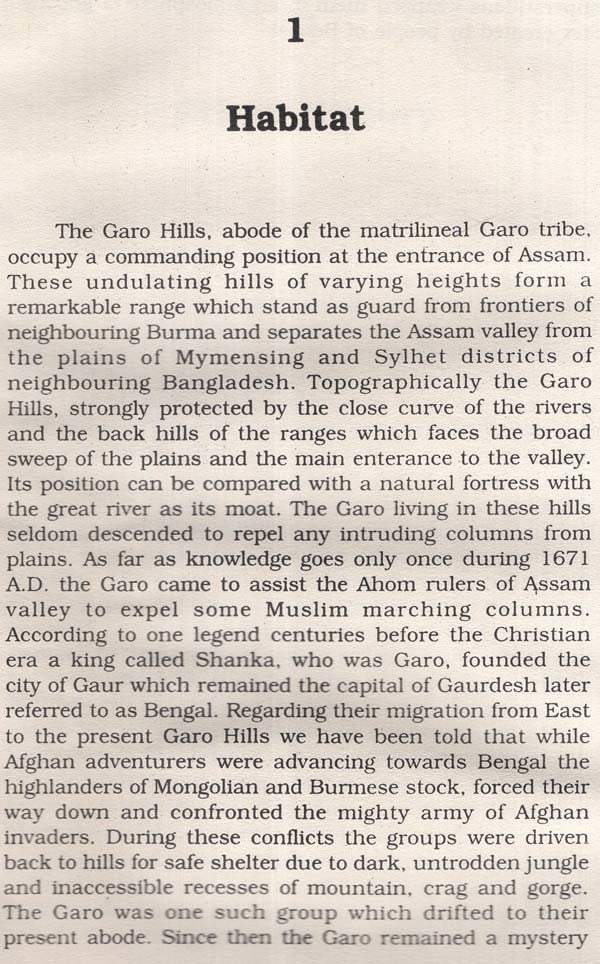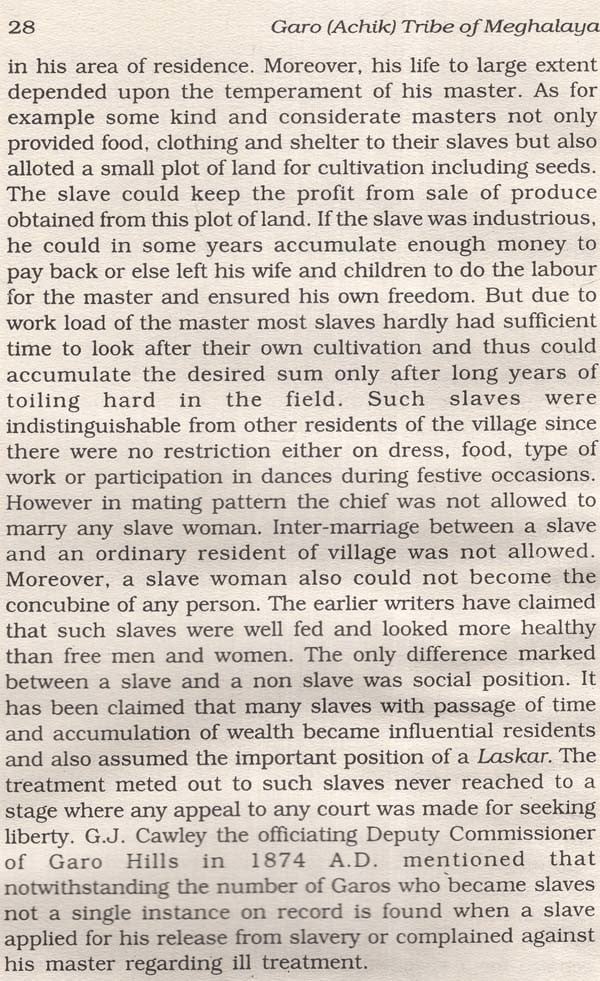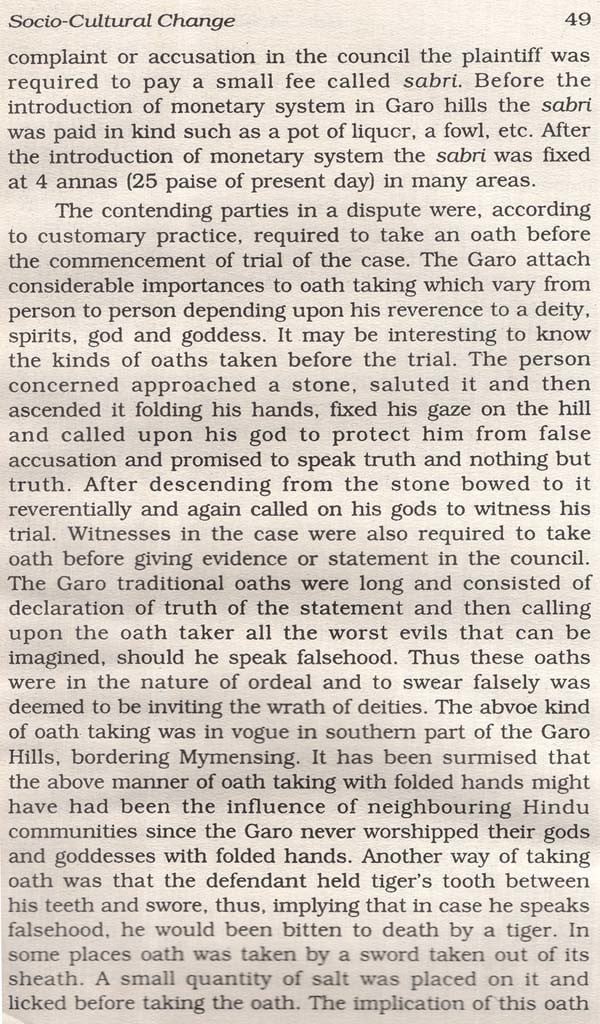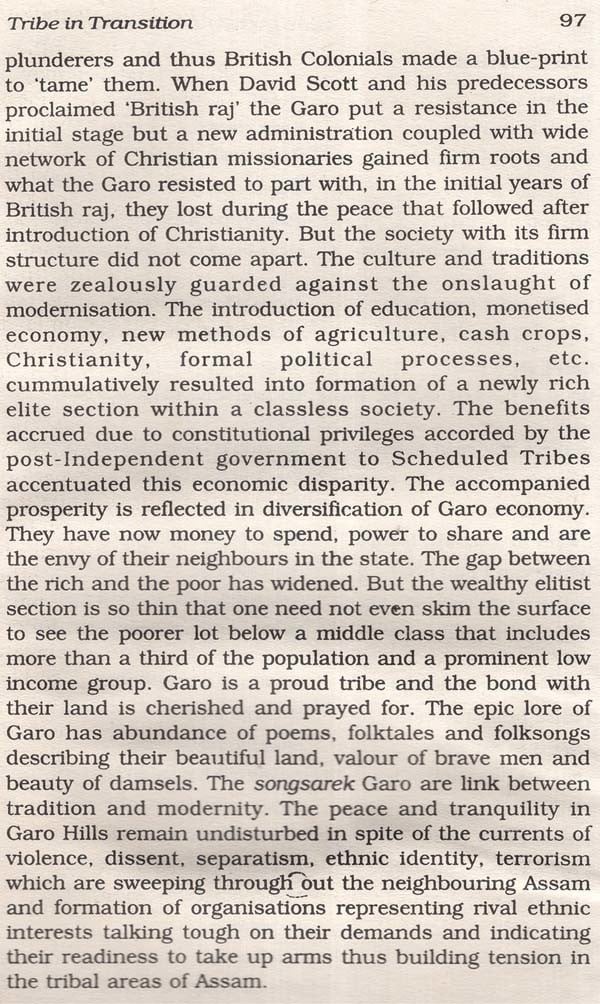About the Book The Garo people live in the North East part of India and concentrated in the state of Meghalaya. They reside on the hills that derive its name from, Garo and hence referred to as Garo Hills. The Garo address themselves as A' chik or Mande. The people live in a lush forested area that experiences heavy rainfall. The population of this area is believed to be approximately 300,000. The Garo people categorise themselves into a number of groups based on dialectical difference and location. The Garo set up permanent villages that vary in size. These villages tend to be between 10 to 60 households. The people of the village rely on the slash-and-burn technique for agriculture that they refer to as jhum. They cultivate rice, millet, and bananas, along with a variety of vegetables. The important cash crops for the Garo people are cotton, chili, peppers and ginger. The lifestyles of the Garo people are all based on a matriarchical point of view. In other words the people put a high status and power in the hands of the women. The land can only be inherited through the women of the families. The village leader is only chosen by the husband of the heiress. Each married couple chooses one daughter, usually the youngest, to be the heiress of the household and property. Sometimes the position of this youngest daughter would fall into marrying a specific relative as well to keep the land in the family.
American Baptist missionaries arrived in the Garo Hills and professed Christianity. As a result, one-quarter to one-third of the Garo are now Christians. The native Garo religion includes the belief of supernatural spirits called mite. They believed that these spirits lived in the jungle and caused diseases. They also believed in important gods that overlooked the growth of the crops. The book is a cultural travelogue and depicts the traditional way of Garo life and the change crept therein.
About the Authors The Garo people live in the North East part of India and concentrated in the state of Meghalaya. They reside on the hills that derive its name from, Garo and hence referred to as Garo Hills. The Garo address themselves as A' chik or Mande. The people live in a lush forested area that experiences heavy rainfall. The population of this area is believed to be approximately 300,000. The Garo people categorise themselves into a number of groups based on dialectical difference and location. The Garo set up permanent villages that vary in size. These villages tend to be between 10 to 60 households. The people of the village rely on the slash-and-burn technique for agriculture that they refer to as jhum. They cultivate rice, millet, and bananas, along with a variety of vegetables. The important cash crops for the Garo people are cotton, chili, peppers and ginger. The lifestyles of the Garo people are all based on a matriarchical point of view. In other words the people put a high status and power in the hands of the women. The land can only be inherited through the women of the families. The village leader is only chosen by the husband of the heiress. Each married couple chooses one daughter, usually the youngest, to be the heiress of the household and property. Sometimes the position of this youngest daughter would fall into marrying a specific relative as well to keep the land in the family.
American Baptist missionaries arrived in the Garo Hills and professed Christianity. As a result, one-quarter to one-third of the Garo are now Christians. The native Garo religion includes the belief of supernatural spirits called mite. They believed that these spirits lived in the jungle and caused diseases. They also believed in important gods that overlooked the growth of the crops. The book is a cultural travelogue and depicts the traditional way of Garo life and the change crept therein.
Preface The natural resources of a country and its cultural heritage belongs to its people. Each individual has a right over it and they are also vested with the responsibility to understand appreciate and practice it for its conservation. Cultural heritage conceptually is a term which encompasses the entire cultural environment with landscapes, historical places, art forms, celebrations, biodiversity, collections, the traditional and continuing cultural practices, knowledge. wisdom and living experiences. All these are achieved over a long process of historic development forming the essene fa highly diversified national, regional, Indigenous and local of a specificities which becomes an integral part of contemporary living. Thus, it is a collection of dynamic referral points and positive instrument for growth and change. Heritage along with collective memory are area based or community based which are irreplaceable and form the main bulwark for present and future development. India is a country which portrays variety of cultural norms and practices reflecting its diversity and character.
Tourists in thousands through all the six seasons flock here not for the airports, hotels, recreational facilities, gambling havens, geographic locations, palaces, temples and the people. Each of the above mentioned aspects of tourism In India is much below the mark of world standard. Other countries have better infrastructural and logistic support for comfort of the tourists, Popularity of India in world tourism is because of its vibrant culture and still alive cultural heritage which are manifested in the mundane affairs of the people in their day to day living style: whether they are Hindu, non-Hindu or tribal. All these collectively is an aspect of life to be experienced and not only seen.
**Contents and Sample Pages**
